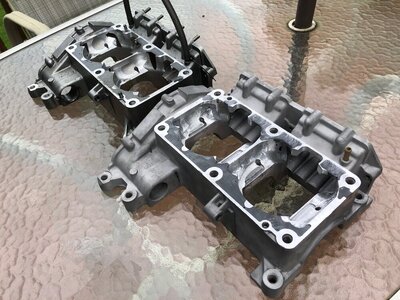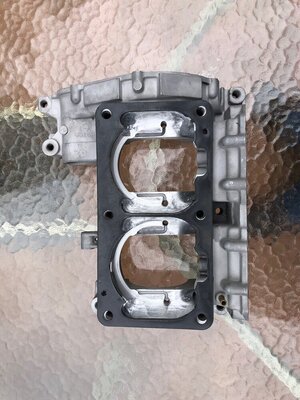Yep thanks for derailing..............I'm surprised it took this long.
A lil' Google goes a long way....
Does the Society of Automotive Engineers have enough credibility for ya?
Studies have been conducted for determining the distribution of the lubricant in a crankcase scavenged two-stroke cycle engine. Presently, it is not obvious how newly supplied oil reaches each engine part and how it leaves the engine through the exhaust gas. Furthermore, it is desirable to know what

www.sae.org
The stripping of cylinder oil at the scavenging ports of low-speed two-stroke marine engines is one of the main sources of floating oil droplets existing in cylinders. The combustion of these oil droplets is one of the major reasons of PM emissions and pre-ignition for dual-fuel engines. In order to

www.sae.org
I sure do, but since these articles require a subscription, I cant access them. Mind screenshotting the part where "anywhere under 2k rpm, oil is falling or stationary" is mentioned? Again not trying to be a dick, just not totally sold on this.
For the record I never once made any mention of premix ratios.
" at 1000 rpm a two stroke fires about once every 7-8 rpm"
You mean Air/Fuel Mixture Combustion?
From a bad Air/Fuel Mixture? Because of Spark misfires? CDI/Ignition Coil Charging Time (~3 mili-sec)?
1000 rpm /60 sec = 16.7 rev/sec or 0.060 secs/rev
0.060 secs/0.003 secs ~ 20 Sparks could be released in that .060 Time Window
Maybe 10,000 rpms? Same as 166.7 rev/sec or 0.006 sec/rev
Again, Spark Charging Time is about 3 miliseconds, so 0.006/0.003 ~ 2 Sparks possible in that 6 milisecond Window, enough to fire every Rev @ 10k RPM.
Must be the Air/Fuel Mixture then...
" at 1000 rpm a two stroke fires about once every 7-8 rpm"
This is another claim that needs serious explanation and verification citing some references. Otherwise I call BS. Use some critical thinking, if the engine fires only 1/7th to 1/8th of the time at 1000rpm does the flywheel/rotating assembly have enough inertia to overcome the pumping losses on the non-firing strokes? In other words, would the engine even idle? And quite frankly firing only once out of every 7 strokes would be obviously audible.
Regardless of whether the engine fires or not, it still consumes air. At 16.7 revolution per second, the single cylinder of a 701 consumes 5.8 Liters of air per second (math below).
So if we consider the relatively small volume of the crankcase between the closed reeds and the closed transfer ports, and the fact that air/fuel charge gets replaced every 0.06secs (adding to the total 5.8L/sec). We are talking about a substantial volume of air moving through a relatively small volume of crankcase. This is what leads me to question the statement put out there as fact "anywhere under 2k rpm, oil is falling or stationary".
Math
1000 rpm x 350cc= 350,000 cc/min *assumes 100% volumetric efficiency (even at 85% VE still ~5.0L/sec)
350,000 cc per min / 60 minutes per hr = 5833 cc/sec or 5.8 L per sec














